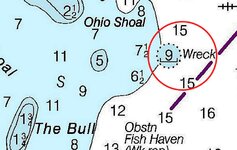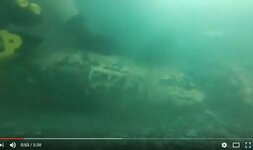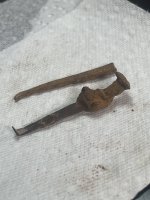Red_desert
Gold Member
- Feb 21, 2008
- 6,855
- 3,504
- Detector(s) used
- Garrett Ace 250/GTA 1,000; Fisher Gold Bug-2; Gemini-3; Unique Design L-Rods
- Primary Interest:
- All Treasure Hunting
If you check a certain nautical chart, about 8 (give or take 1) of the shipwrecks are identified by the word wreck and I think were encircled. We know most of these wrecks already are found or known wrecks. What the shipwreck hunters need is the unknown wrecks and only they would be able to confirm them. So, only about 8 of the locations confirmed or possibly confirmed by nautical chart. Don't ask me to confirm any of the unknowns because I have neither a boat nor any exploration permit.As in dangling something over a map and then believing it somehow magically tells you where things are located?






